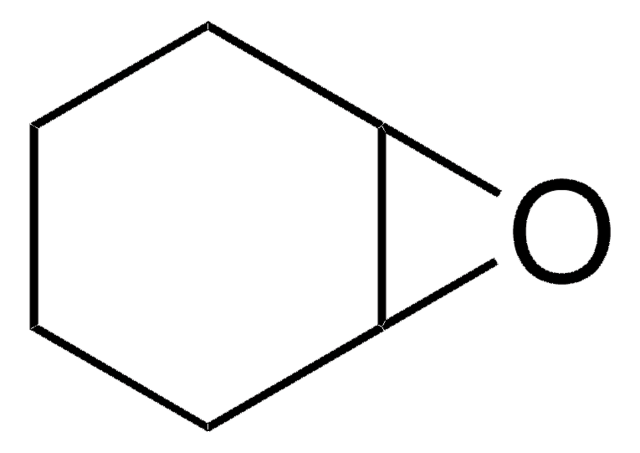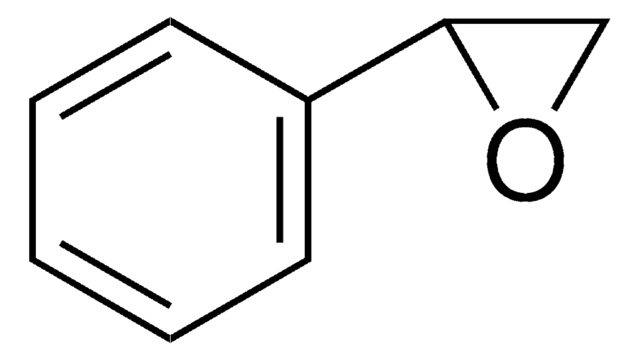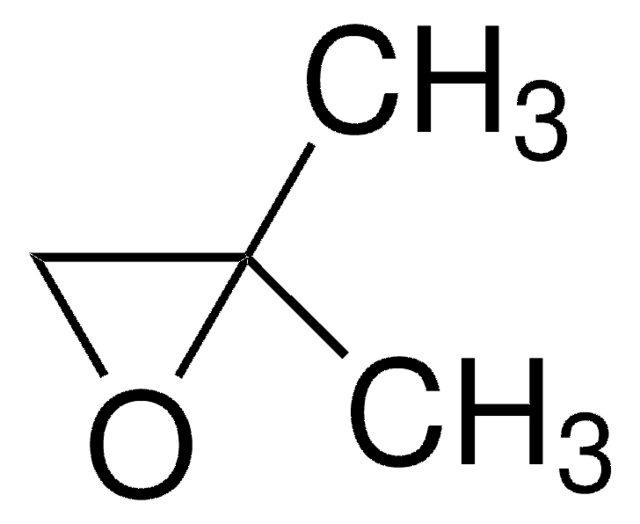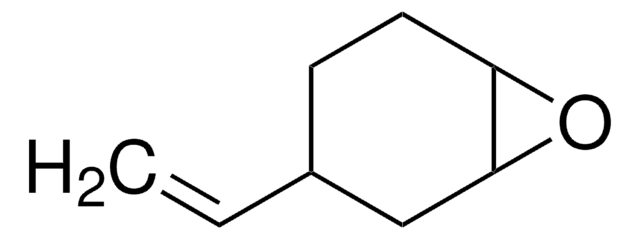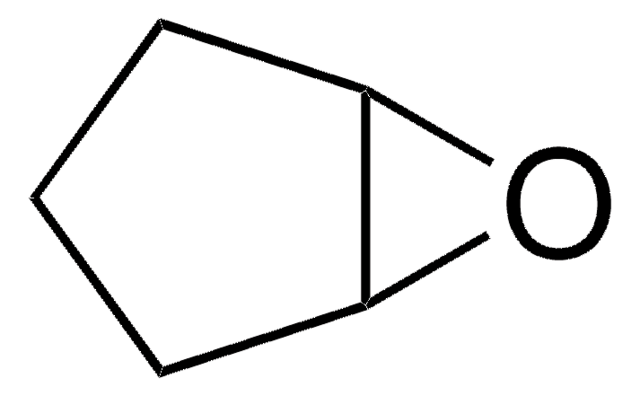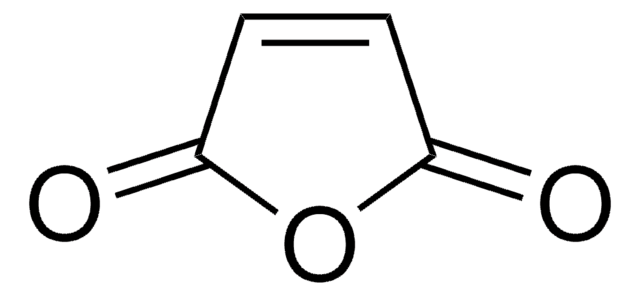377171
1,2-Epoxyhexane
97%
Synonym(s):
1-Hexene oxide, Butyloxirane
About This Item
Recommended Products
Quality Level
Assay
97%
form
liquid
impurities
<3% acetic acid
refractive index
n20/D 1.406 (lit.)
bp
118-120 °C (lit.)
density
0.831 g/mL at 25 °C (lit.)
storage temp.
2-8°C
SMILES string
CCCCC1CO1
InChI
1S/C6H12O/c1-2-3-4-6-5-7-6/h6H,2-5H2,1H3
InChI key
WHNBDXQTMPYBAT-UHFFFAOYSA-N
Looking for similar products? Visit Product Comparison Guide
Related Categories
Application
- Poly (epichlorohydrin-co-1, 2-epoxyhexane)–a promising precursor for an energetic azido polymer for cast-cure: Discusses the synthesis of a copolymer using epichlorohydrin and 1,2-epoxyhexane, aiming to develop an internal plasticizer for energetic applications (TM Klapötke, 2016).
- Synthesis of hierarchically porous zeolite TS-1 with small crystal size and its performance of 1-hexene epoxidation reaction: This study investigates the catalytic performance of 1,2-epoxyhexane in the preparation of intermediates for various chemical industries (M Zhang et al., 2021).
- Bioproduction of Chiral Epoxyalkanes using Styrene Monooxygenase from Rhodococcus sp. ST‐10 (RhSMO): Focuses on the enzymatic production of (S)-1,2-epoxyhexane using a biocatalyst, highlighting its potential in creating chiral epoxyalkanes (H Toda et al., 2014).
- Silica islands regulated external Ti‐site environment of TS‐1 for enhanced performance of 1‐hexene epoxidation: Explores the use of modified TS-1 catalysts to improve the selectivity and performance of 1,2-epoxyhexane in epoxidation reactions (J Yuan et al., 2023).
- Gas-phase Photocatalytic Oxidation of 1-Hexene Using Heterogeneous Semiconductor Materials: Describes the synthesis of 1,2-epoxyhexane through gas-phase photocatalytic oxidation, focusing on the selectivity and efficiency of the process (EA Kamba et al., 2023).
Signal Word
Danger
Hazard Statements
Precautionary Statements
Hazard Classifications
Acute Tox. 4 Oral - Eye Irrit. 2 - Flam. Liq. 2 - Skin Irrit. 2 - STOT SE 3
Target Organs
Respiratory system
Storage Class Code
3 - Flammable liquids
WGK
WGK 3
Flash Point(F)
59.0 °F - closed cup
Flash Point(C)
15 °C - closed cup
Personal Protective Equipment
Certificates of Analysis (COA)
Search for Certificates of Analysis (COA) by entering the products Lot/Batch Number. Lot and Batch Numbers can be found on a product’s label following the words ‘Lot’ or ‘Batch’.
Already Own This Product?
Find documentation for the products that you have recently purchased in the Document Library.
Our team of scientists has experience in all areas of research including Life Science, Material Science, Chemical Synthesis, Chromatography, Analytical and many others.
Contact Technical Service
